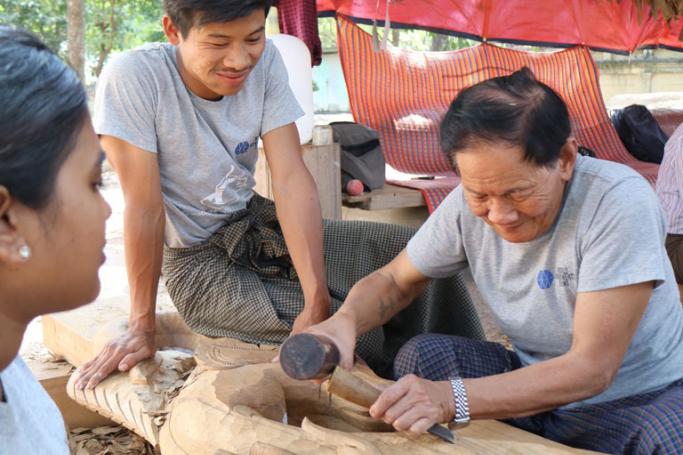The US Embassy in Yangon is halting the Ambassadors Fund for Cultural Preservation project to preserve the historic teak monastery of Shwe-nandaw Kyaung in Mandalay.
In a letter sent to the Myanmar Foreign Ministry on May 12, the US Embassy expressed its concerns about due process not being followed in the recent resumption of work at the site.
As the embassy stressed in its letter, the Shwe-nandaw Kyaung project site closed on March 26, 2020 when the Myanmar Ministry of Health and Sports ordered the Department of Archeology and National Monuments (DOANM) to close all historic sites to the public in response to the first COVID-19 cases in Myanmar. The US Embassy's grantee for the project, World Monuments Fund, complied with orders to stop the work and left the equipment and materials purchased with United States Government funds for completion of the project on the site. The equipment includes power tools and materials such as teak logs, lumber, and sandstone blocks.
“It has come to the U.S. Embassy's attention that work has recently restarted on the site. However, the work is not being undertaken by the U.S. Embassy's grantee, World Monuments Fund. The U.S. Embassy is concerned that the equipment and materials currently on site, which remain property of the grantee, are being used without the Embassy's permission,” the letter says.
According to the program director Jeff Allen of the World Monuments Fund, the monastery restoration project was a social development program utilizing heritage preservation as a means to bring important opportunities to the people of Mandalay. However, there has long been tension over the project and concern that elements in the DOANM were more interested in benefiting from the funding than working with the NGO.
With support from the U.S. Embassy in Burma, the Ambassadors Fund for Cultural Preservation, and others, World Monuments Fund has been leading conservation efforts at Shwe-nandaw Kyaung since 2014. The project aimed to preserve and restore the nineteenth-century architecture and craftsmanship characterizing the original structure at the time of its 1883 re-construction in the present location. This involved reviving building technologies and crafts unique to this monument and adhering to international standards in the preservation of historic sites. It also invested in building the skills of local craftspeople, artisans and outreaching to youth.
According to WMF, wooden monasteries were once ubiquitous features of Myanmar’s landscape and important aspects of the country’s cultural heritage. Each village had its own monastery with variations in appearance and ornamentation that reflected local vernacular styles. However, many of the teakwood monastic buildings in Myanmar are endangered due to lack of maintenance or unsympathetic restorations, an issue emphasized by the rareness and high cost of teak wood and the loss of craftsmanship.
In the letter, issued this week, “the US Embassy requests that work on the site conducted with these materials and equipment stop immediately and that the materials and equipment be returned to the U.S. grantee, the World Monuments Fund, via its office in Mandalay. The grantee must be given unimpeded access to said equipment and materials for removal and disposition.”
According to Mr Allen, it was clear from the start of the project that many at the DOANM viewed WMF - a registered non-profit in several countries and a specialist in preserving built heritage - as little more than a construction contractor, and all they sought was a financial opportunity. Others were entangled in political agendas, seeing the project as a platform to air larger issues. With them, Mr Allen said it was clear there was never the slightest sense anyone thought about what is best for Myanmar’s cultural heritage.
Mr Allen said that after many struggles and obstacles, costing time and money, with the help of the monastic community associated with the site, the project team managed to obtain some breakthrough by pleading to the Mandalay Regional Government, who is the legal authority responsible for Shwe-nandaw Kyaung. With momentum established, progress was made with two dozen Burmese employed on the project and major works were to be finished in early 2021.
Unfortunately, things did not go as planned, he said. Just as the site was closed over COVID-19 concerns in early 2020, the US Government and WMF were roundly criticized by certain Mandalay Regional Government officials for involving themselves in Burmese affairs, mainly for encouraging a monastic presence returned to Shwe-nandaw Kyaung - in 1995, the military forcibly removed monks from Shwe-nandaw Kyaung and turned it into a paying tourist site. Even the young mainly female WMF staff were criticized for their sense of fashion and disrespect to Burmese culture and even threatened with arrest.
A resolution of the dispute is currently underway.
The WMF works on restoration projects around the world from Thailand to Peru to Iraq and Ethiopia.












